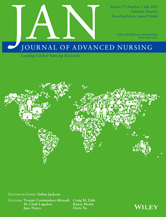Telehealth during COVID-19: The perspective of alcohol and other drug nurses

Aim
This study aimed to explore the experiences of alcohol and other drug nurses transitioning to telehealth due to the COVID-19 pandemic.
Background
COVID-19 has caused immense disruption to healthcare services, and to reduce viral transmission, many services moved to off-site care delivery modalities such as telehealth.
Design
We used a qualitative descriptive design for this study.
Methods
Secondary analysis of semi-structured interviews with alcohol and other drug nurses from Australia and New Zealand (n = 19) was conducted in July and August 2020. Data were analysed using thematic analysis and reported using COREQ guidelines.
Results
Three were identified: ‘“All our face-to-face contact ceased with clients”: Changing service delivery’, ‘“How do I do my job when I can't see you?”: An anxious shift in service delivery’ and ‘“A lot of Indigenous people don't like the FaceTiming and all that”: Challenges to delivery of services through telehealth’.
Conclusion
Participants in our study reported challenges in transitioning to telehealth modalities. The perceived loss of therapeutic communication, difficulties in assessing risks to healthcare consumers such as domestic violence and challenges delivering telehealth care to a marginalized consumer cohort need to be overcome before telehealth is considered successful in alcohol and other drug treatment. However, telehealth was a successful adjunct to existing practices for nurses working with consumers in regional or remote areas or where consumers preferred this method of service delivery.
Impact
Nurses in this study described substantial issues with the delivery of alcohol and other drug treatment via telehealth, including a perception that telehealth was a barrier to addressing risks to consumers who use alcohol and other drugs, and difficulties working in a therapeutically beneficial way via telehealth. Telehealth is a means to reduce viral transmission through a reduction in face-to-face contact, and although it may be useful for some service functions, it may be detrimental to the clinical services nurses provide.
